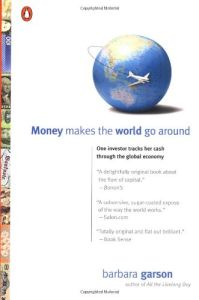Join getAbstract to access the summary!

Join getAbstract to access the summary!
Barbara Garson
Money Makes The World Go Around
One Investor Tracks Her Cash Through The Global Economy, From Brooklyn to Bangkok and Back
Penguin Group (USA), 2002
What's inside?
Don’t know where your money is going? Deposit it at home; seek it around the globe. Just one drop in the economic storm.
Recommendation
Some books set out to accomplish the impossible and come admirably close. Barbara Garson’s volume is a prime example. Can you deposit money in a little rural bank and really trace its spread across the global monetary system? How do you know that a multi-million dollar loan to, say, shrimp exporters in Thailand, really has anything to do with the actual dollars you deposited? But that’s not the point of this book. The author embarks on a whirlwind, worldwide tour of the global financial juggernaut, and shows how money falls like a drop in a pond and emits waves of disruption that seemingly spread out forever. Garson concludes that deregulation needs to be reigned in, a reasonable anticipation of the Enron mess. getAbstract.com highly recommends her book to business people and consumers who want a better feel for what the "global economic order" is all about, why people are protesting at each meeting of the WTO and whether you should be steamed as well.
Summary
About the Author
Barbara Garson has written for The New York Times, Harpers, The Washington Post, The Los Angeles Times, The Boston Globe and Newsweek. Her nonfiction writing has earned her a Guggenheim Fellowship, a National Endowment for the Arts Fellowship and a National Press Club Citation. She wrote a best-selling book, MacBird!, two well-known volumes about the workplace, All the Livelong Day and The Electronic Sweatshops, and several plays, including Security and the Obie Award-winning children’s play, The Dinosaur Door.

















Comment on this summary